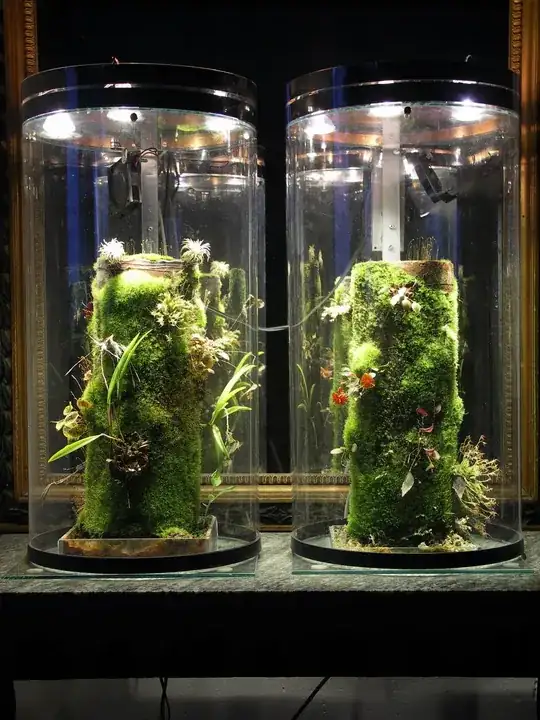You can use just about any light source but each has it's consequences for your design:
- fluorescent lights are cheap, have a long life, tubes are available to mimic sunlight and they don't generate a lot of heat in comparison to halogens. The output decreases as the bulbs age and I found replacing them every five thousand hours worked best. With the ballast and housing they need they are normally a bit bulky for the kind of setup in the picture.
- halogen lights are much smaller, have a longer life, offer a strong white light. They run really hot, like burn your fingers hot. The bulbs cannot be touched with your fingers as oils cause premature lamp failure. This much heat causes a big temperature difference and consequent humidity. Unless you circulate air from outside the vivarium into the vivarium you could cook everything inside.
- HID, high intensity discharge are sometimes known as Xenon, generate a lot of white spectrum. They are said to generate less heat than halogen but the ones I have will still burn your finger if you touch the exterior glass. They are expensive in comparison to fluorescent but are compact. Lifespan ranges from eight thousand to twenty thousand hours without the lumen output decreasing. They can be dimmed unlike halogens. You would still need to have a fan circulating air inside the vivarium and some kind of humidity control.
With any indoor container the following issues will arise:
- if it's warmer inside than outside you will get condensation on the interior surface which makes it hard to see inside
- you need air circulation but success lies in keeping the humidity higher on the inside than the outside
- you need to have the lights and fans on a timer. With the multiple lights and at least one fan you may have to wire your own connection or buy a huge power bar.
If money is no object and the look and aesthetics is important go for xenon. If cost is important use fluorescent with the best bulbs you can buy.
